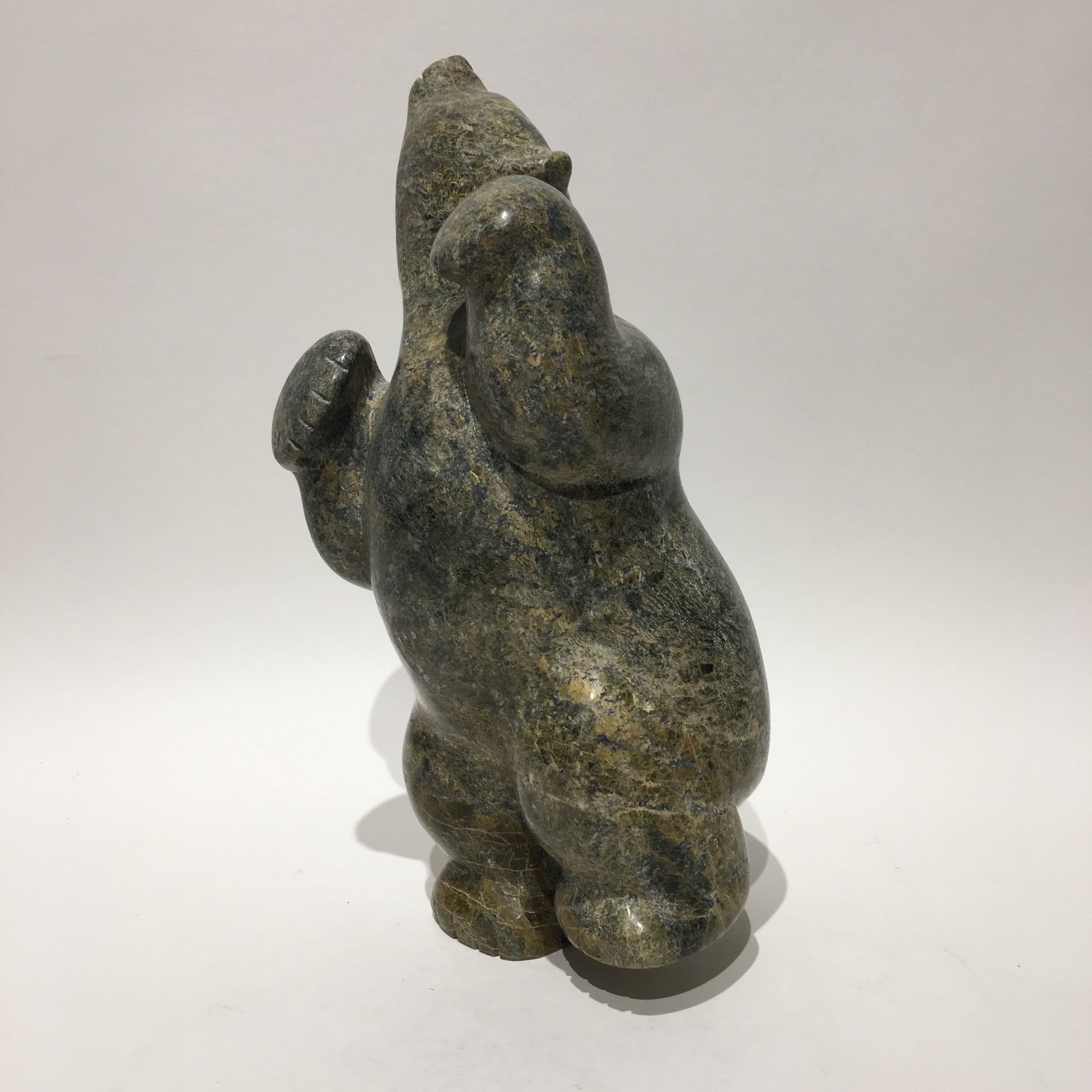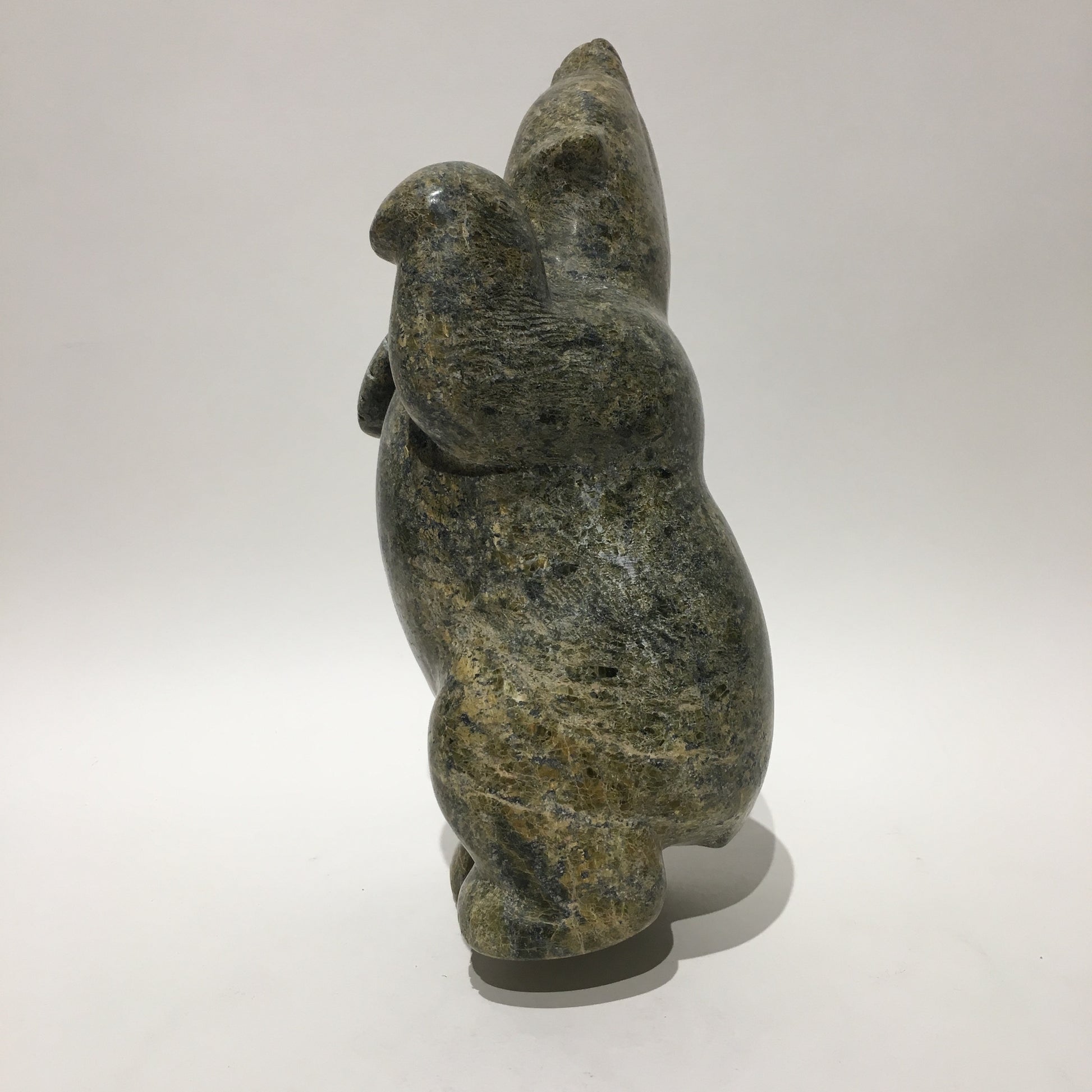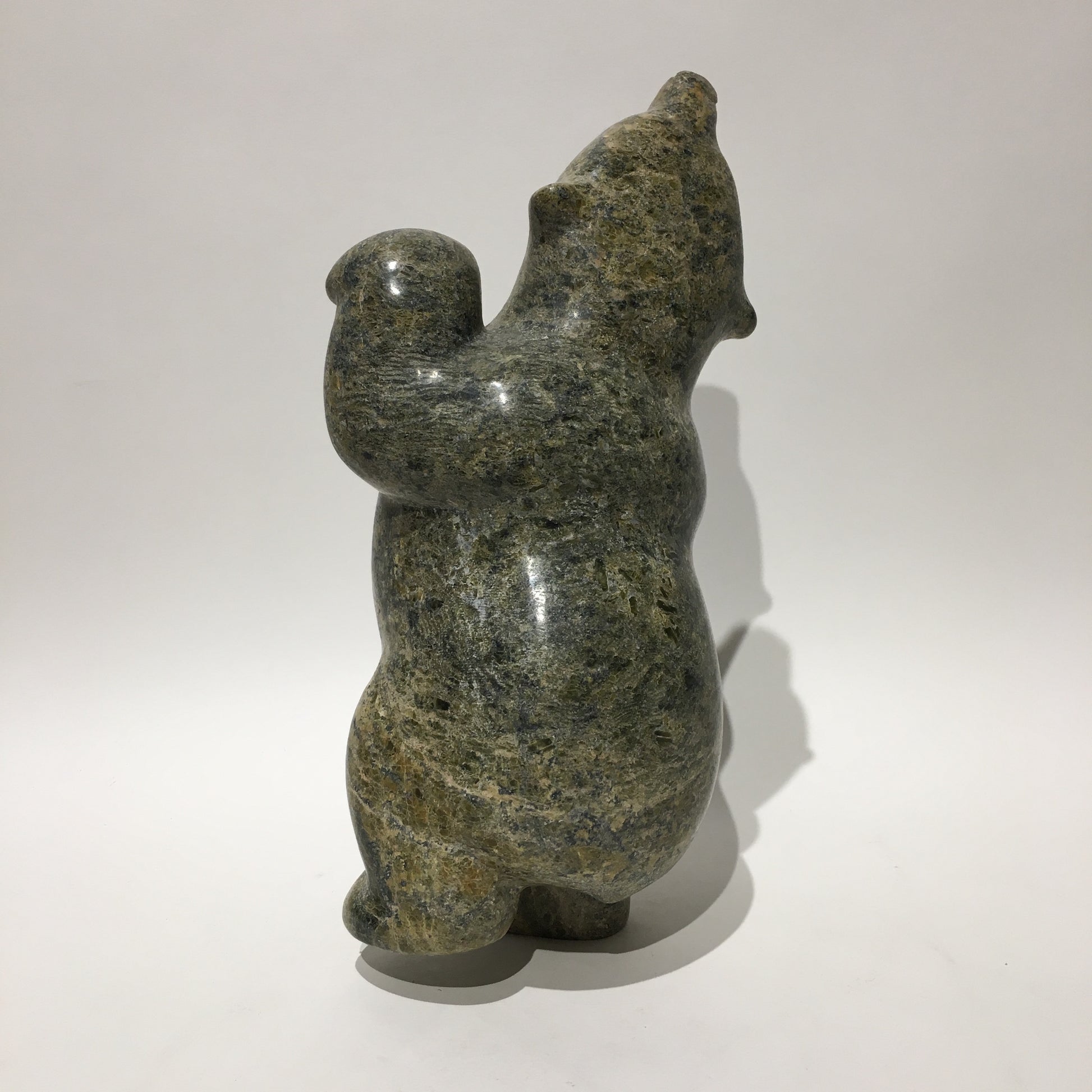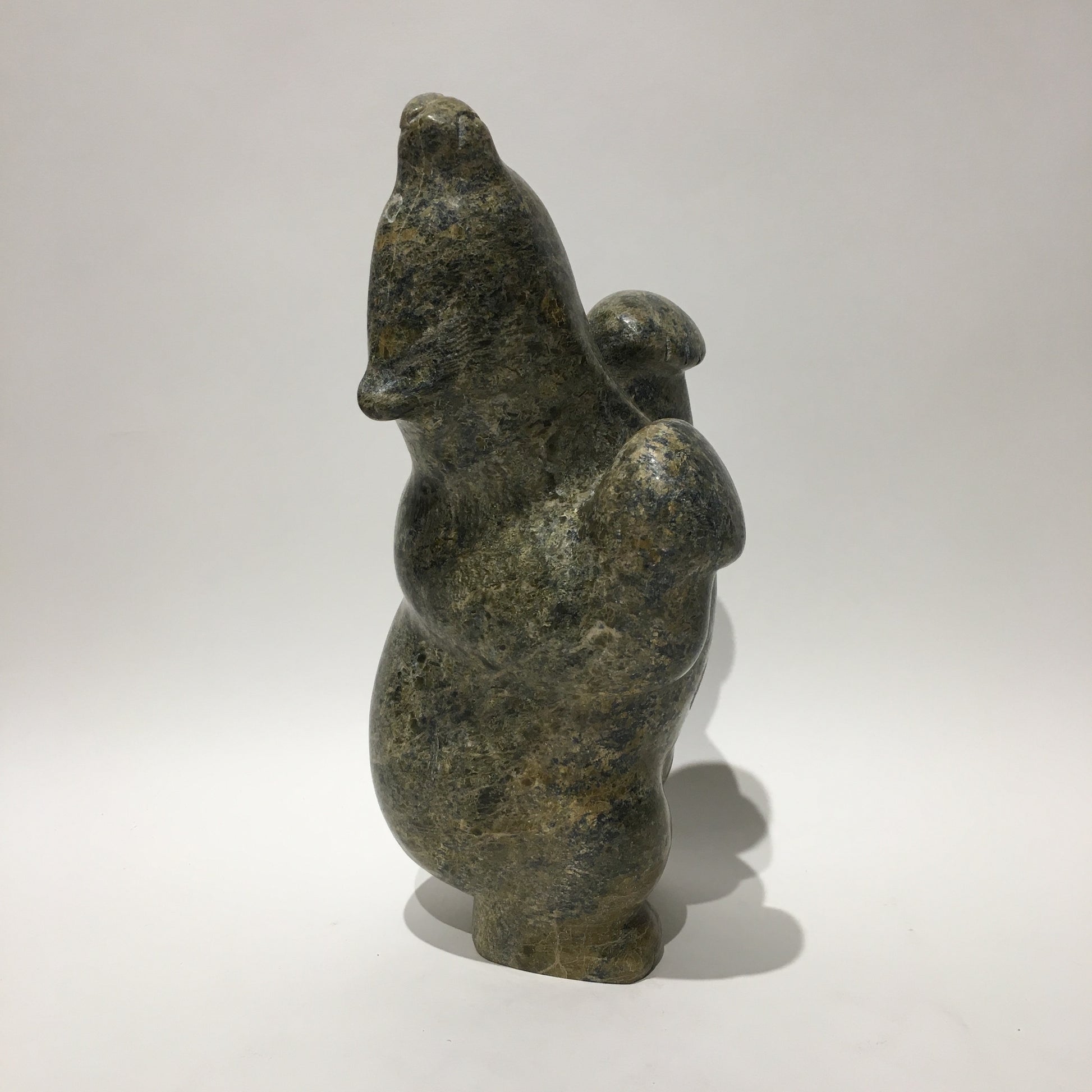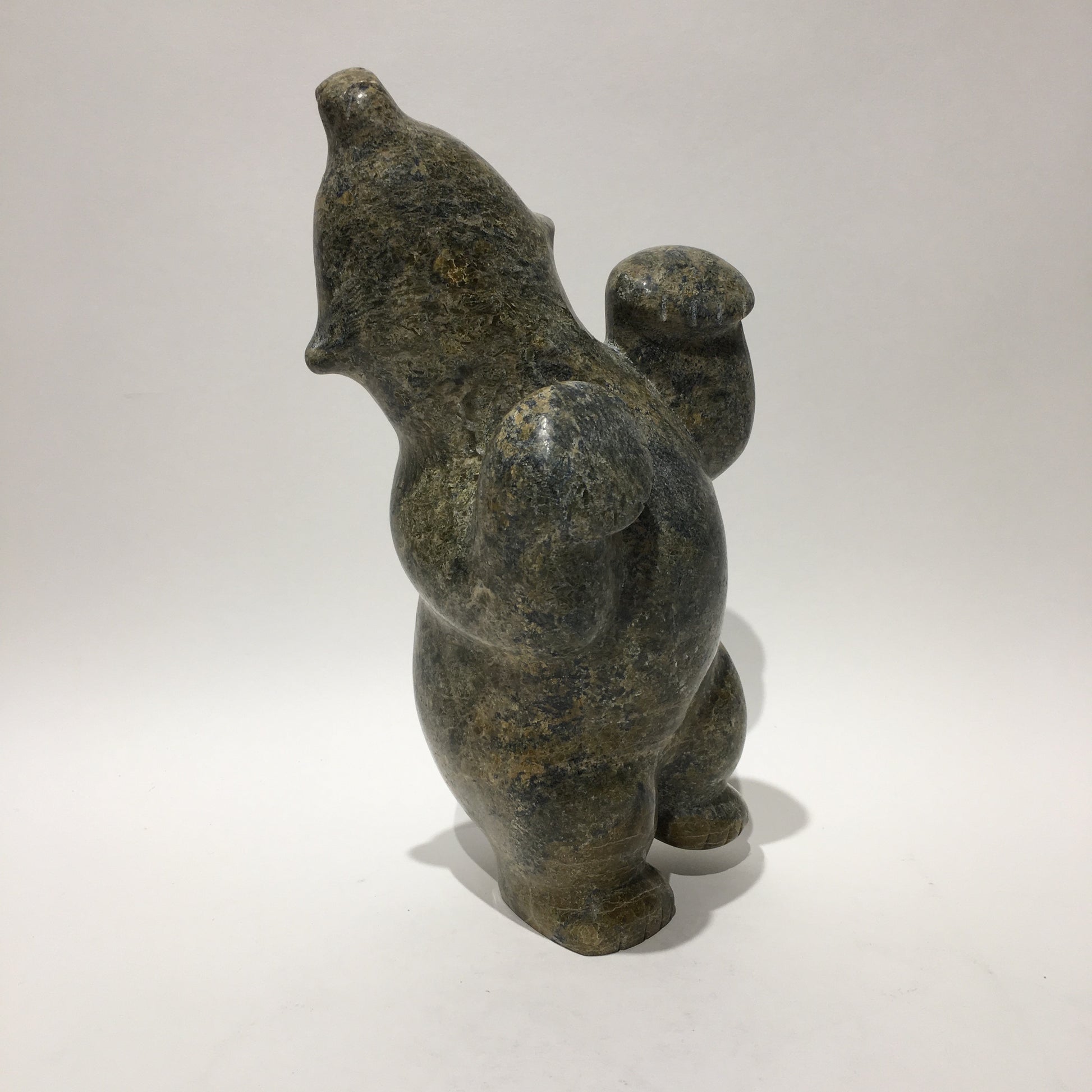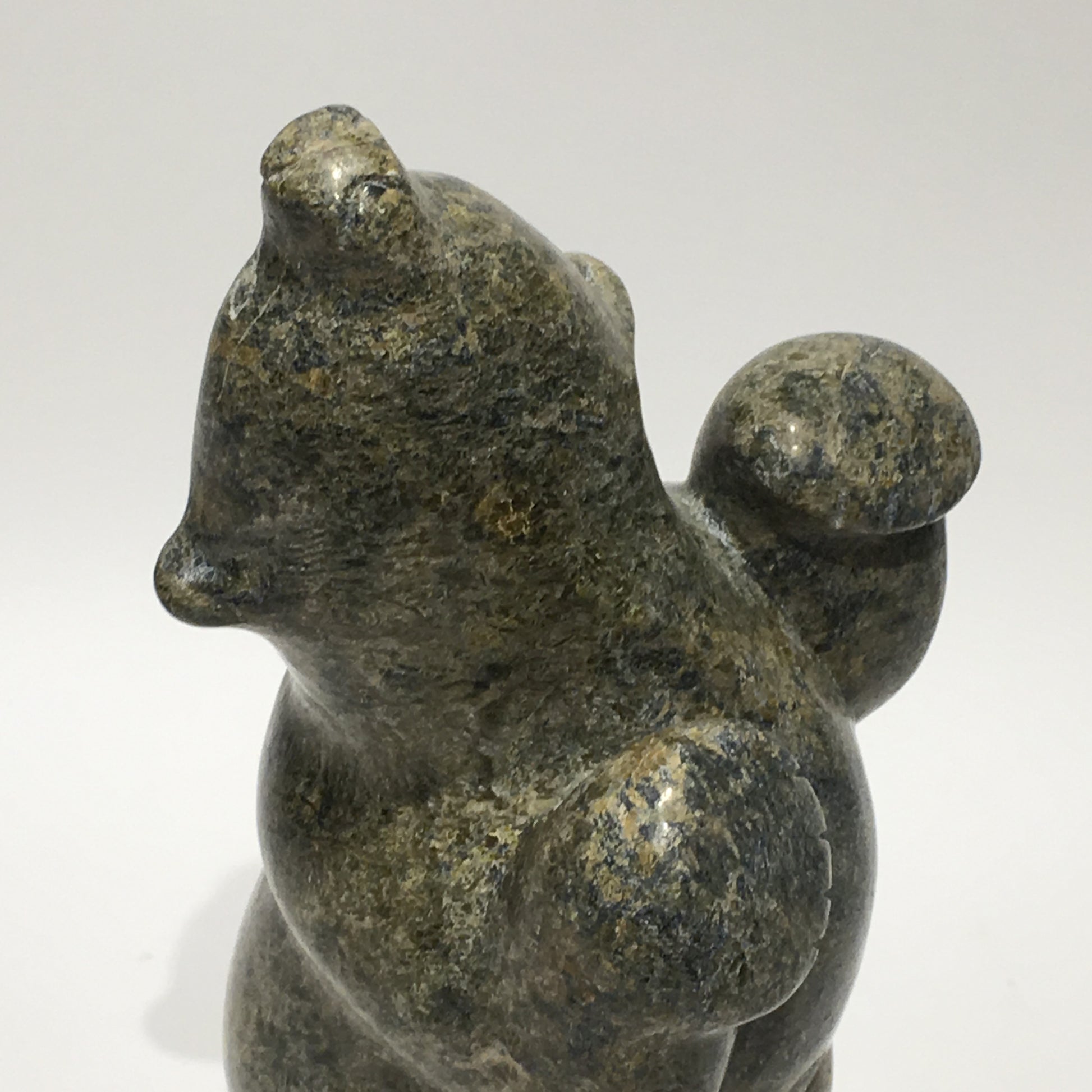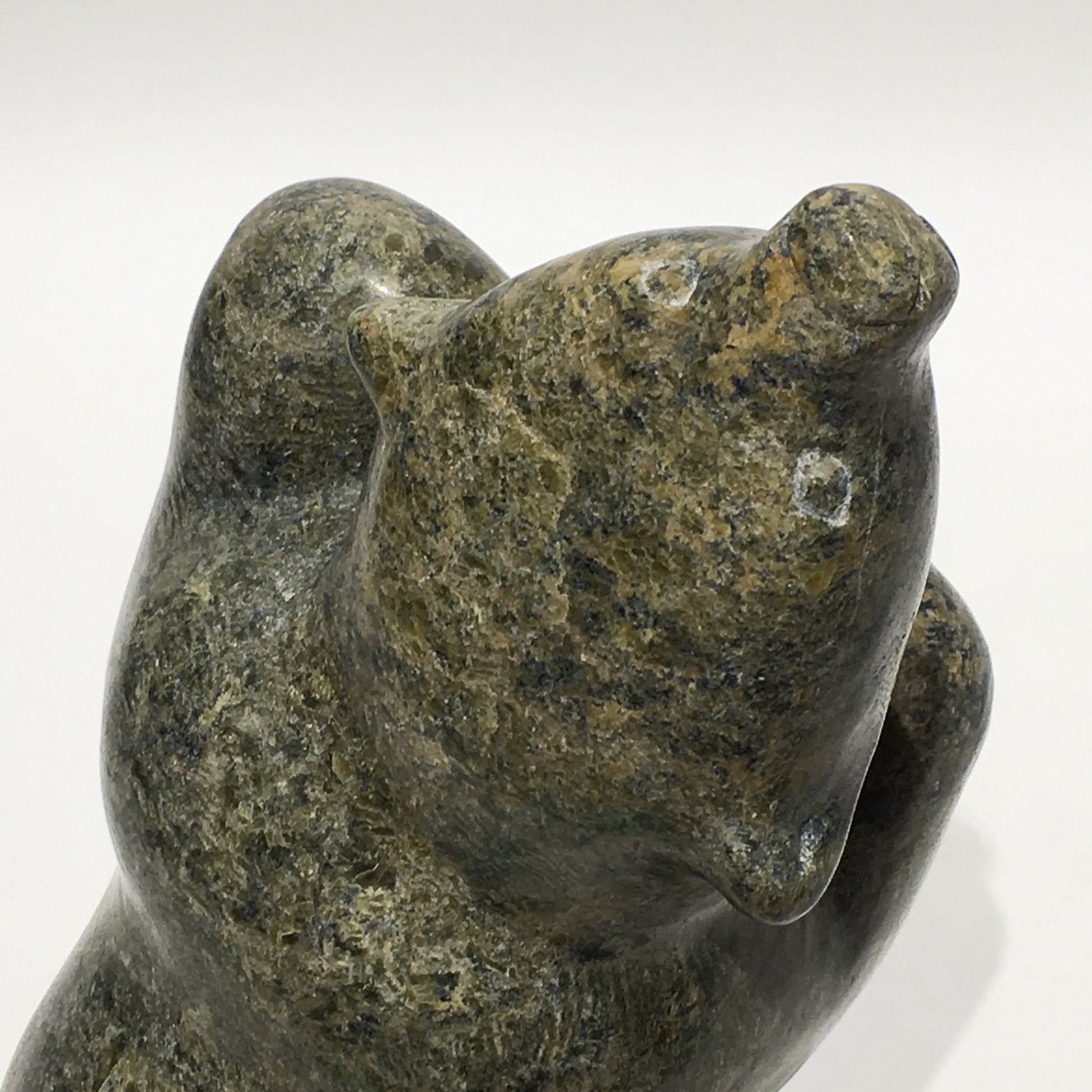Native Art Gallery
Dancing Bear
Dancing Bear
Artist: Papigatok, Markoosie
Community: Cape Dorset
Medium: Soapstone
Dimensions (in): W5.0 x H 5.0 x D10.0
Reference: 106286
Couldn't load pickup availability
Share
Endearingly called the "King of the North", the Polar Bear, or Nanuq, is the greatest predator of the Arctic and a powerfully respected animal. He is the one animal that is at home both on land and water. He is built for his environment and has no troubles surviving the long, harsh winters.
Some Inuit believe that how we live our lives affects what we become in the afterlife. Apparently, the best reward for a life-well-lived is to return in the form of the polar bear. This is because the ‘King of the Arctic’, as he is endearingly called, is strong enough to survive the long, cold winters. Instead of carving polar bears only in walking positions or other poses often seen in nature, Inuit carvers began to make bears in upright positions, often standing on one hind leg. This pose represents the polar bear in a happy state of dancing and celebration. Some carvers claim that dancing bears represent a form of shamanism and transformation between a human and a bear.
The Dancing Bear shows gratitude for having been recognized and rewarded for his efforts. May this sculpture celebrate the successes of your life.
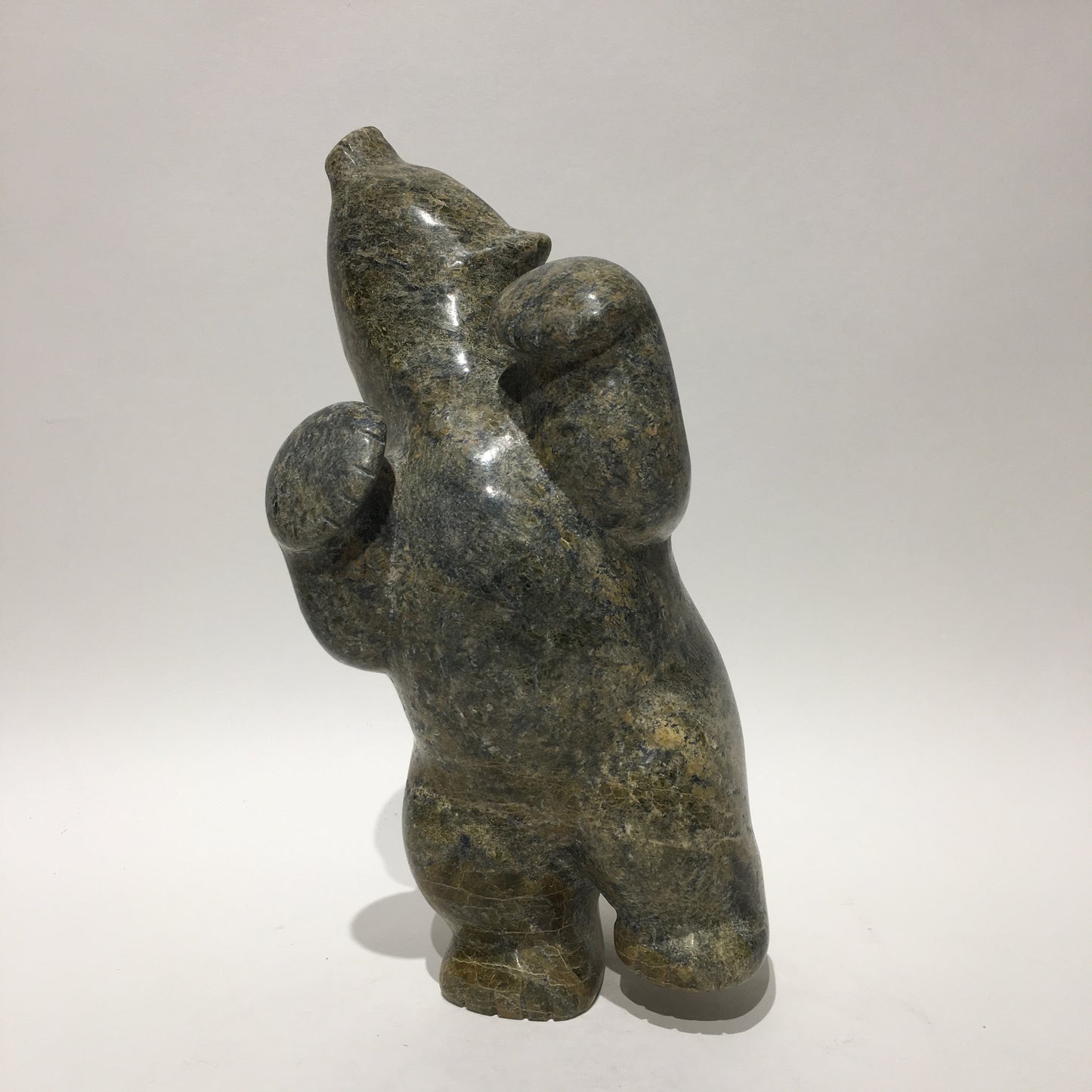
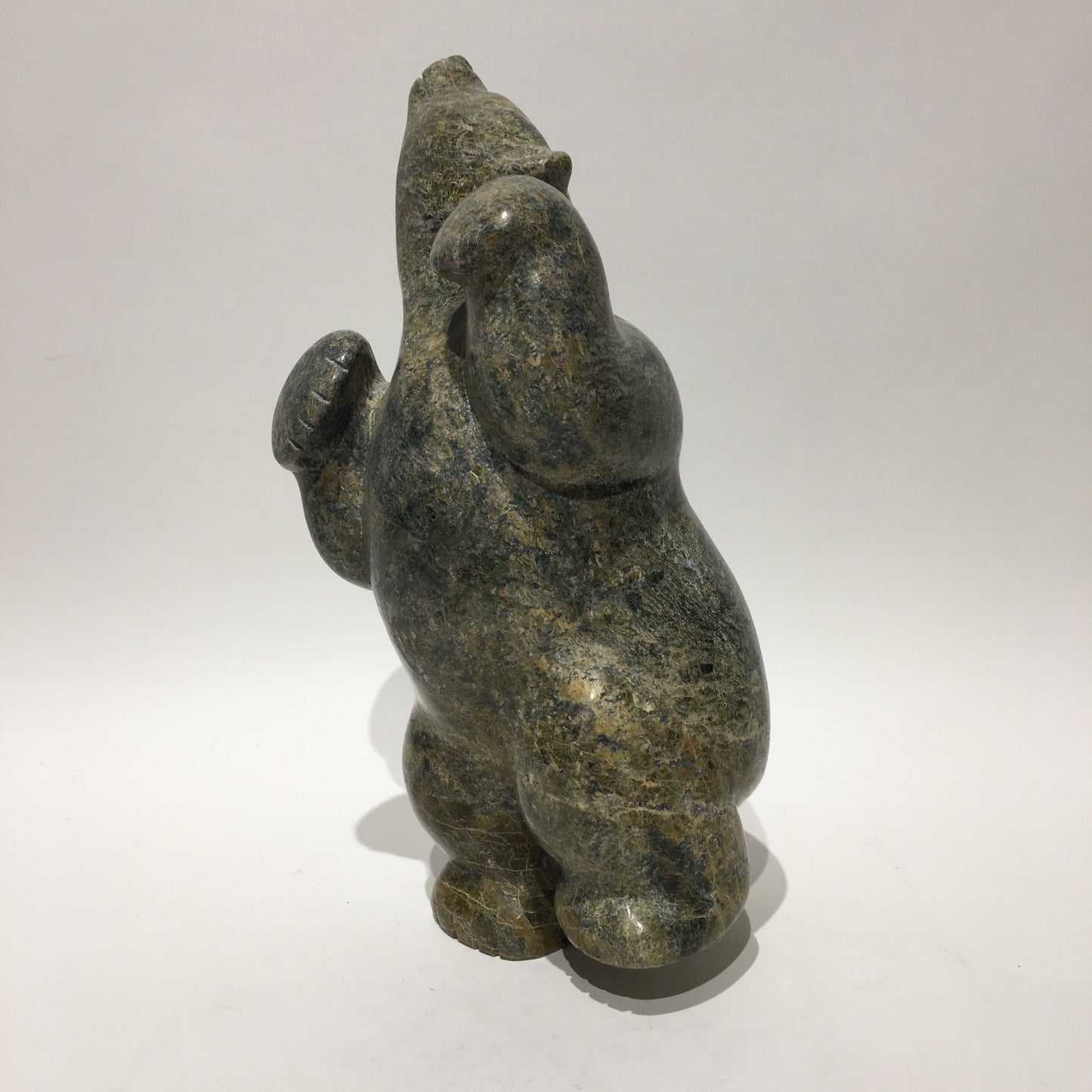
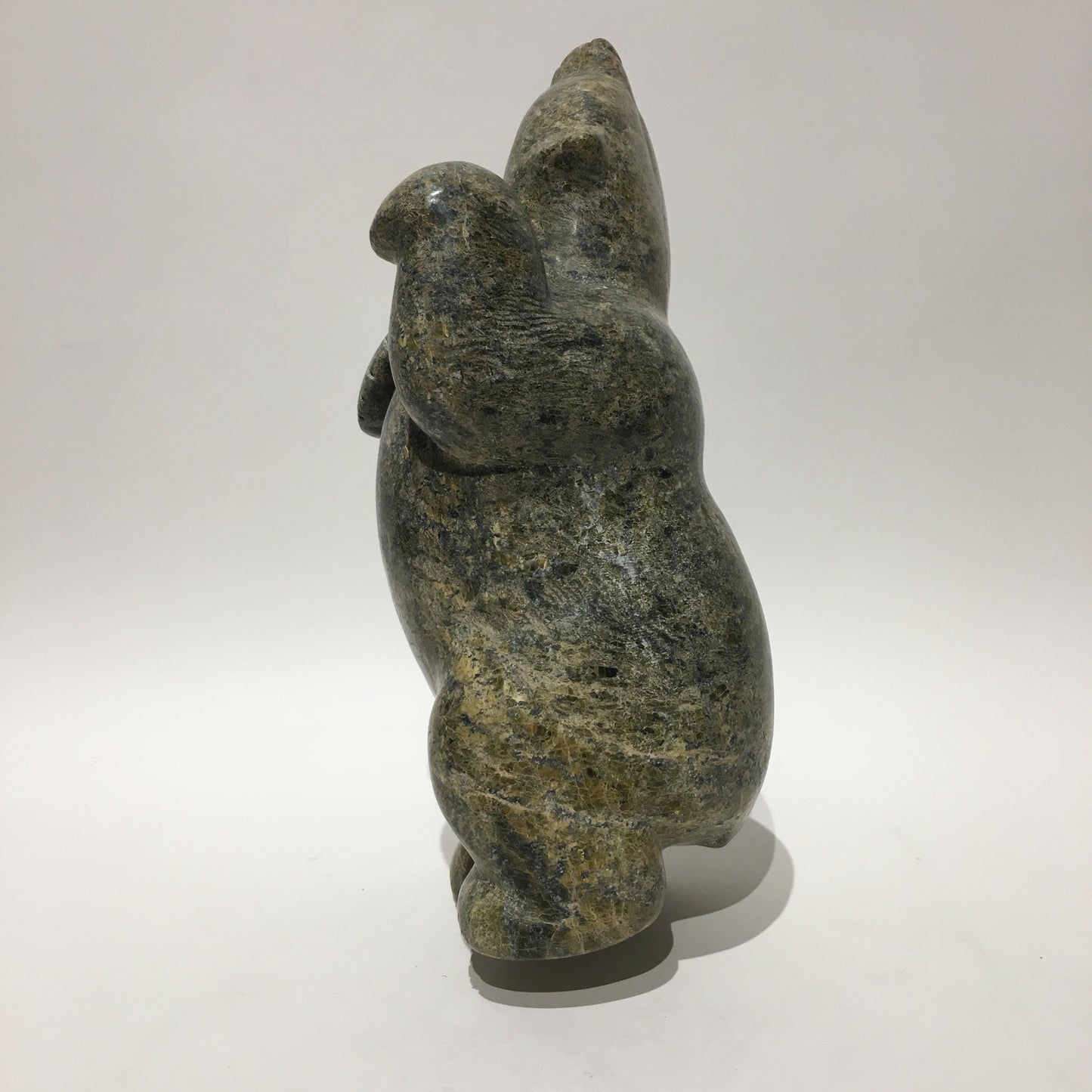
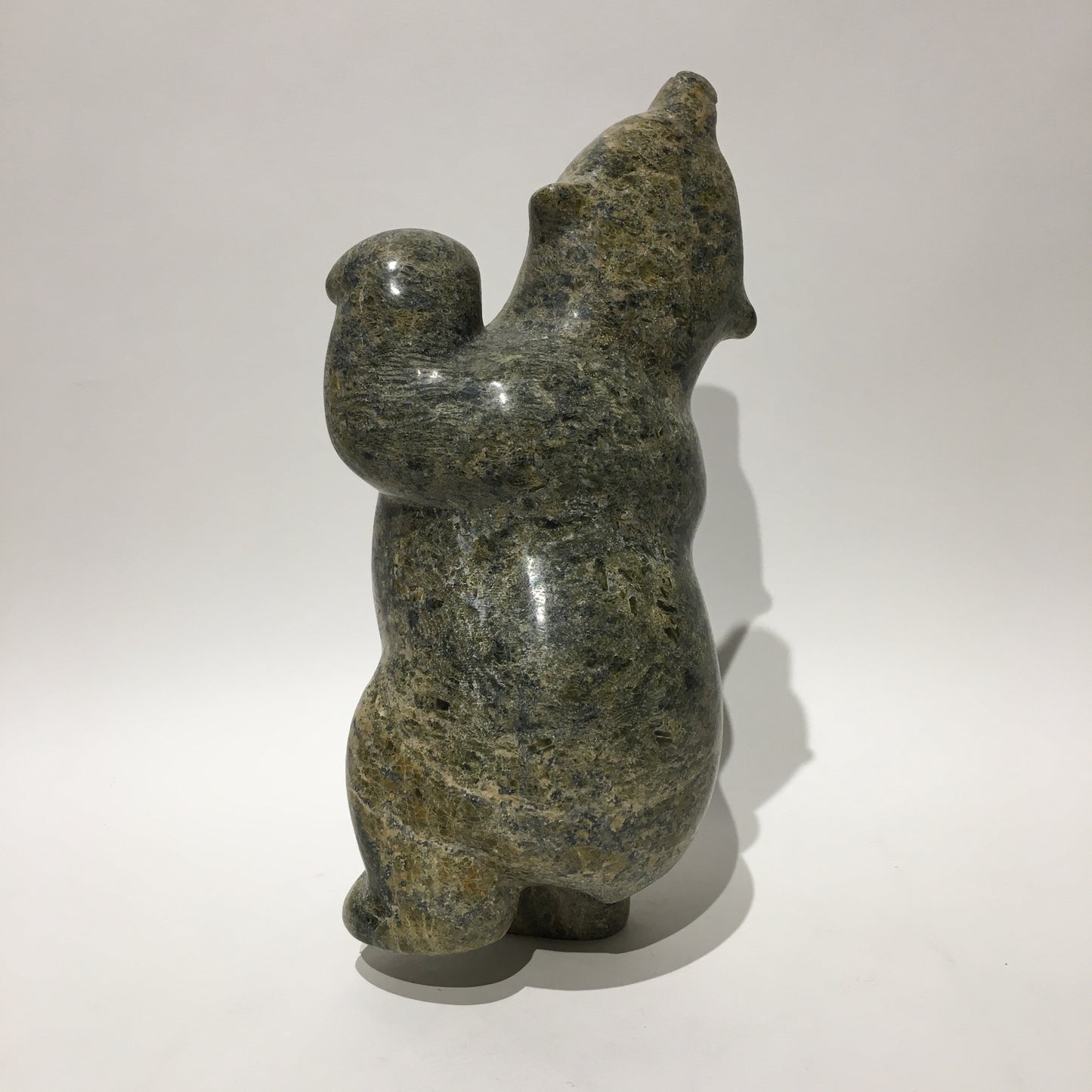
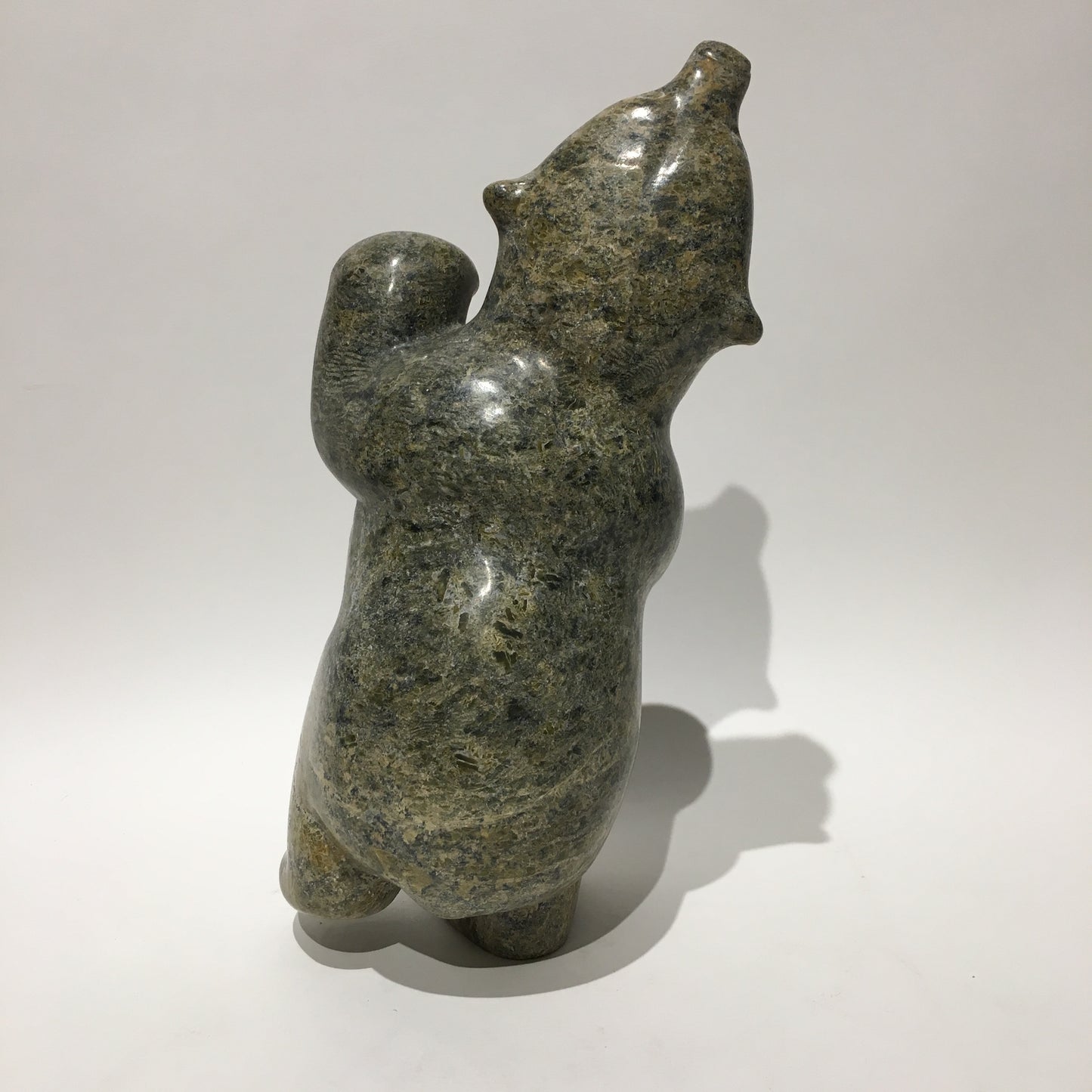
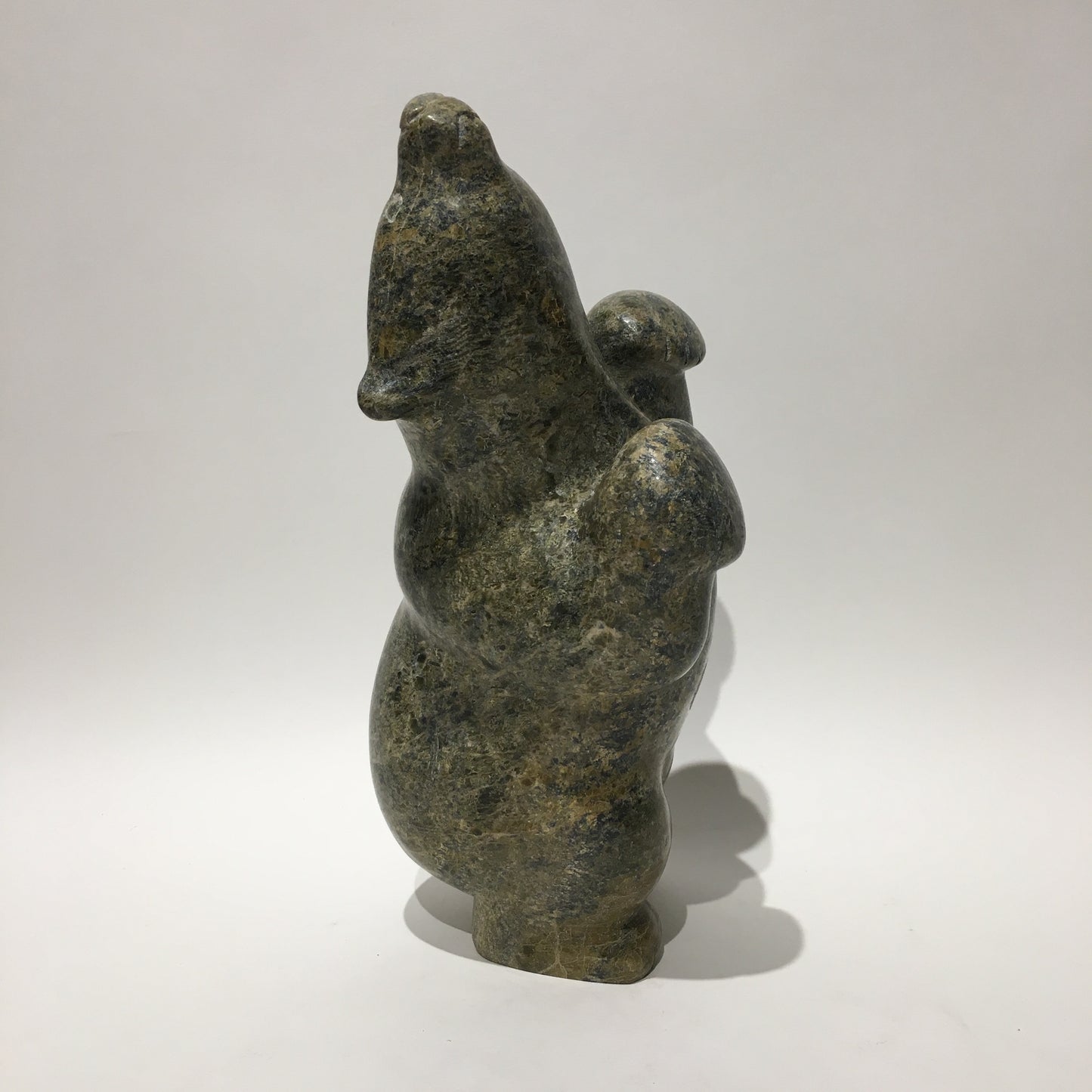
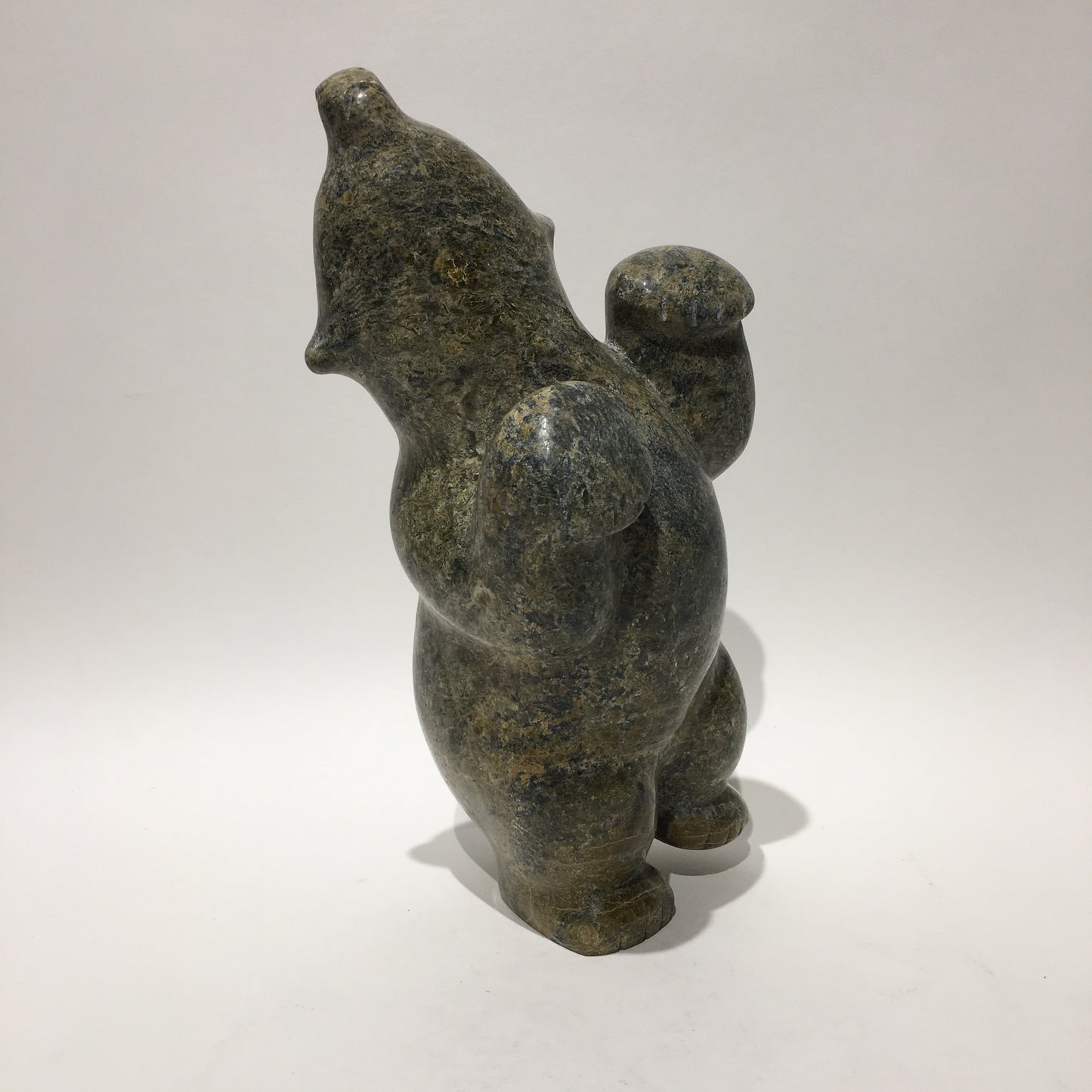
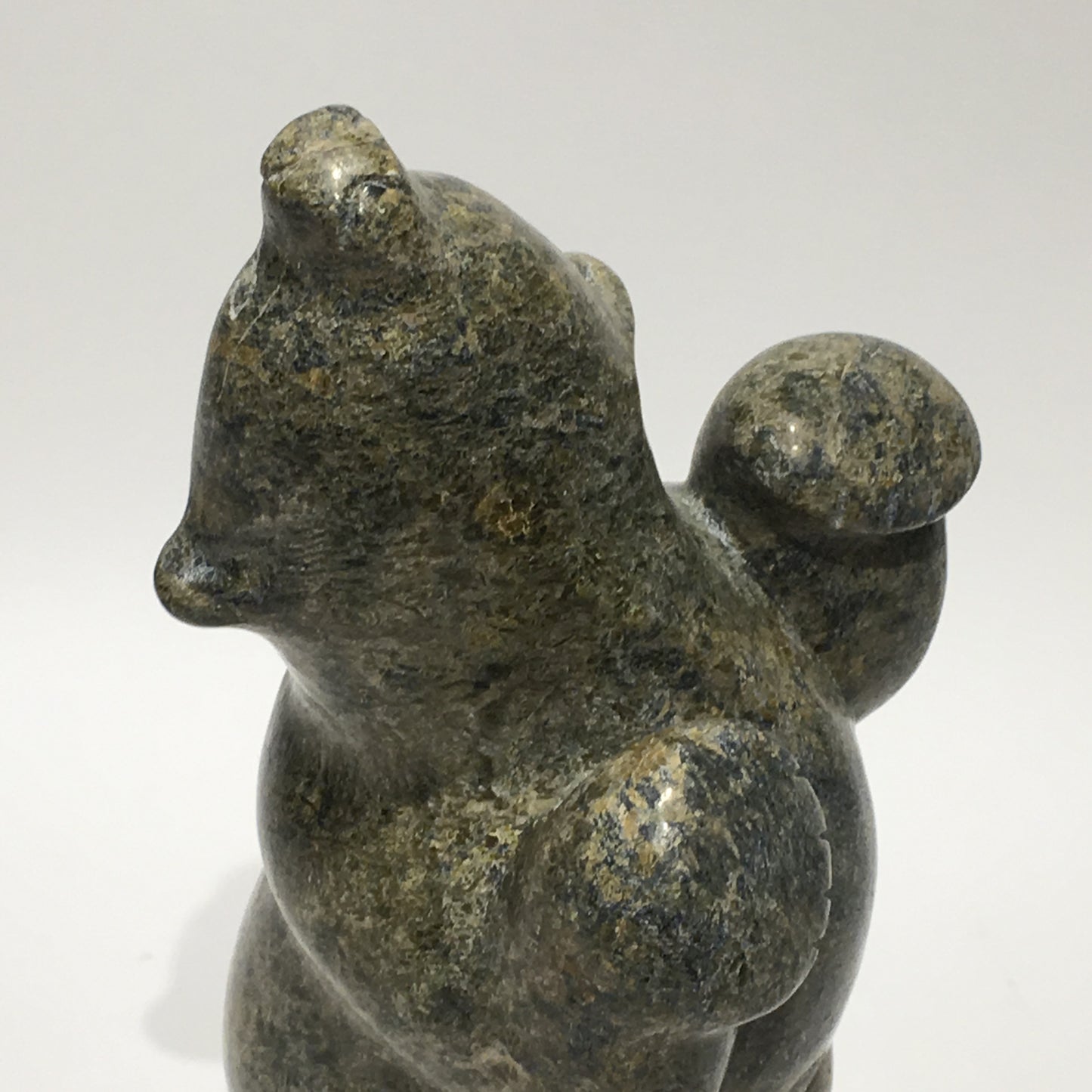
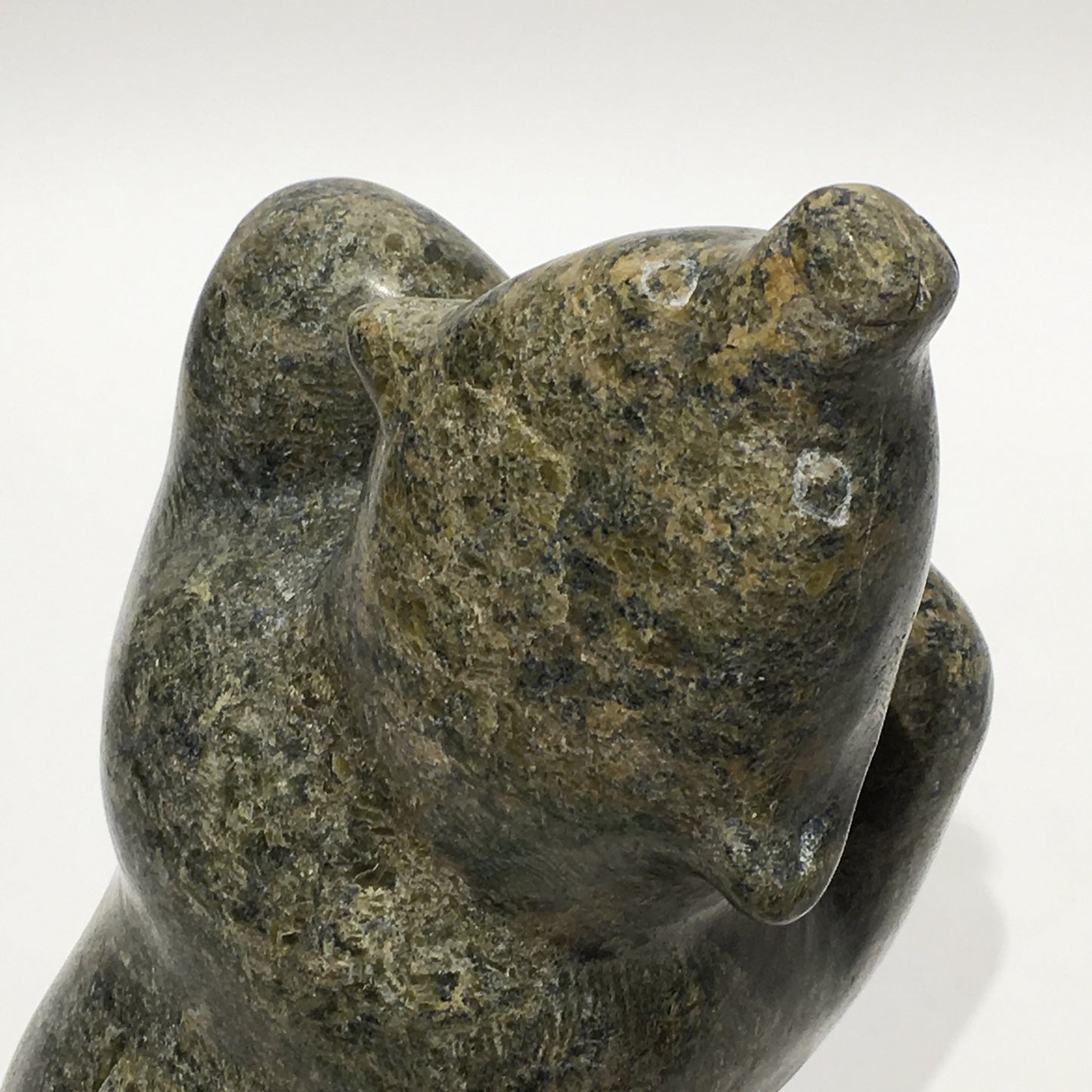
Product SKU
Papigatok, Markoosie
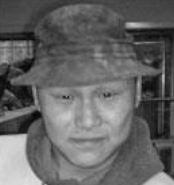
Markoosie Papigatok is a prominent Inuit sculptor from Kinngait (Cape Dorset), Nunavut, born in 1976 in Puvirnituq, Nunavik, Quebec. He comes from a family of skilled carvers, including his grandfather, Qavaroak Tunnillie, and his uncle, Ashevak Tunnillie. Although largely self-taught, Papigatok honed his skills by closely observing the work of these influential family members.
Papigatok's art is characterized by his focus on smaller, more intimate sculptures, often depicting dancing bears—a subject that has become synonymous with his work. His sculptures are noted for their polished stone, rounded lines, and whimsical elements, bringing a sense of joy and life to his subjects. He also experiments with different types of stone, sometimes incorporating multiple varieties in a single piece to symbolize transformation.
Papigatok’s work has been exhibited across Europe, Canada, and the United States, with pieces featured in collections such as the Musée d’art Inuit Brousseau in Quebec City and the Canada Council Art Bank in Ottawa. His sculptures continue to captivate audiences worldwide, reflecting the deep cultural heritage and artistic traditions of the Inuit people.


